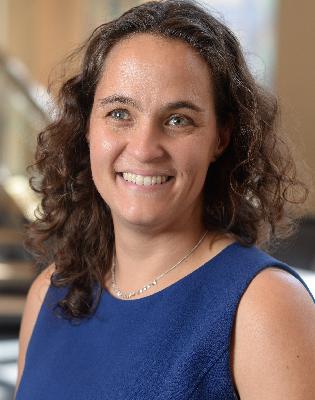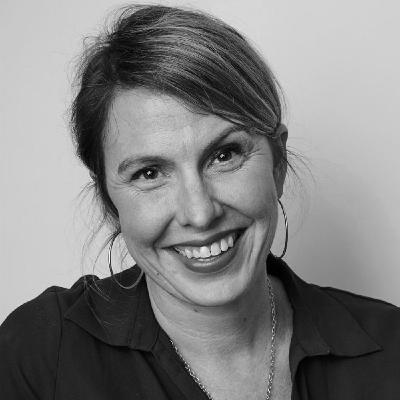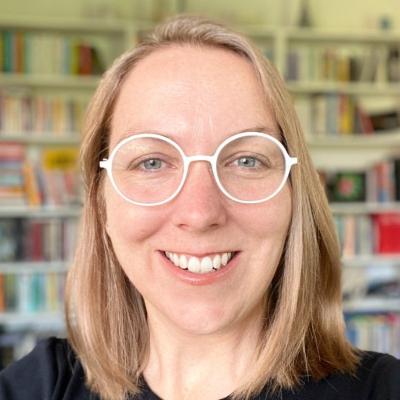46: Leading with Clarity (ft. Vuokko Aro)
Description
Transcript
This transcript is auto-generated and lightly edited. Some errors may remain.
Jesse: I’m Jesse James Garrett,
Peter: and I’m Peter Merholz.
Jesse: And we’re finding our way,
Peter: Navigating the opportunities
Jesse: and challenges
Peter: of design and design leadership,
Jesse: On today’s show, Vuokko Aro, VP of Design for the UK’s popular digital-only bank Monzo, joins us. We’ll talk about shifting your design approach as your company scales, building a true peer relationship with product leadership, and creating a sense of togetherness for remote and embedded teams.
Peter: Hi Vuokko, thank you so much for joining us.
Vuokko: Hi guys. Thanks for inviting me.
Peter: We’re going to start where we always start which is to learn a little bit more about you. So, who are you? What do you do? What’s your role? Give us a little background.
Vuokko: Absolutely. So I’m Vuokko VP design at Monzo, which is a digital-only bank. It’s a scale-up based in London. And I’ve been on this startup scale-up journey since the early days and have scaled myself with the company.
And before this, I was at other startups in London, New York. I have a kind of a strange background, where I have a master’s in design, but before that I actually studied economics. I have an MBA, which used to be a fun fact about me. No one would ever know, but actually as I’ve progressed in my career, especially the startup that took off being a bank, it has become pretty useful.
I would say that I can, I can help lead the company without adult supervision.
Peter: You, got your MBA before your design degree.
Vuokko: I did. Yes.
Peter: That’s the reverse of many of the design leaders we talked to.
Vuokko: Yes.
Why design?
Jesse: I’m curious about the pivot for you. What drew you to design?
Vuokko: Mm, yes. It’s a good question. Well, I’m one of those people who’ve always done creative things since like a young age, just drawing and designing things and, I don’t know, high school, someone needed a hoodie, I would design it. At my school of economics, if we needed to make a magazine, I would do the layout in InDesign.
So I guess it was just always a calling. But earlier on at the time when I was starting to choose a career, it didn’t seem like a real one yet, at least if you ask my parents. I think I chose something more traditional and then ended up drifting to it anyways. I worked as a journalist, a copywriter, concept designer, drifted into full time design when the, actually when the iPhone was released and touch devices became a thing and that was very exciting that you could touch these things and actually people would feel things through those.
So that’s how I made the leap.
Peter: Interesting. I hadn’t realized just how much of your journey was also Monzo’s journey, and I think kind of charting that path could be interesting. But to set a little bit more context, you mentioned Monzo’s a digital-only bank. How many people use it, and in what parts of the world is it used?
Vuokko: Yes. We’re mainly UK-only now. We’re starting to work on our US product as well, but it’s very early days. But in the UK we are a household brand. People are very passionate about it. It’s the kind of thing, it’s funny. Outside the UK, people have not heard of Monzo, and in the UK, you can’t tell anyone you work at Monzo without hearing so much love and excitement about it, and we have this, like, iconic, hot coral, we call the color hot coral, debit card, and everyone knows it, so we’ve got a big consumer brand.
We’re also a social network, in my opinion, because every Monzo customer has 37 contacts on Monzo to send payments to and so forth. When I joined, we were a prepaid card. That’s how we got going just to build the product out in the open.
The original team, which I’m not part of the original team. I just joined early. The original team started applying for a banking license, but already started building the product to learn from customers and to like start finding product-market fit early on. And then we got the banking license and then built the bank app on top of that.
So the earliest version of the product was kind of like a Venmo. But for the past five, six years, more than six now, we’ve built loans and overdrafts and investments now. The goal is not just a bank, but, the interface to all your money, basically, which is a lot of complexity for us to handle and make simple for our customers.
Design’s journey at Monzo
Jesse: So you mentioned you were not part of the founding team. Where were they on their journey when you joined the company? Did design already exist as a function or were you the first designer or like how did that go when you were stepping into this?
Vuokko: Mm hmm. Design already existed and, the first few designers were amazing, so they had set a really strong foundation already. There were three designers when I joined, and I came from other startups, I had designed other consumer apps, so came in to build a delightful consumer experience and looked across the whole app and things have scaled from there, so started managing every other designer who came after me, and introducing design critiques and design culture and all that good stuff.
So taken from there, we were less than a hundred people in the company when I joined. Maybe a hundred thousand users. There had been hockey stick growth just before I joined, and a nice funding round so they could hire me and some other people.
Jesse: Did they bring you in in a leadership role?
Vuokko: No, I joined as a lead product designer, I think. Although the company was very flat at the time, there were no leadership roles other than the founders, really.
Jesse: Yeah, so they needed to create a leadership role for you at some point. How did that come about?
Vuokko: Yep.
So we had our original head of design, Hugo, who’s amazing. And he was the first designer. And then I joined and did my thing and have been on a journey from that time when we didn’t really have any titles or no one cared, to, as we scaled up, created a director level and that became me and then VP.
Jesse: Mm.
That’s been, six, seven years.
Peter: When you were director level, was that the senior most role? As things have scaled, have you been scaling kind of on top with that?
Vuokko: No, Hugo, the original designer, was VP design for a while, maybe a year, two. But before he left, I became VP and then that’s been the last however many years.
Peter: Couple of years according to LinkedIn.
Jesse: Was that previous VP one of the founders?
Vuokko: No, but he was there from day one.
Jesse: What was it like to step in as the, kind of, the second leader? You know, like you’re inheriting something, but it’s not yet what it needs to be? What was that like?
Vuokko: Yeah. I didn’t think about it too much at the time, to be honest. It was one of those times in a startup where everyone’s doing everything from, like, jumping on customer support if there’s a problem, or packing cards in the office if a lot of signups happened the previous day, so we were just doing things together, but I think I also had the privilege of learning with him and he was out there on the frontier and I could watch what he did and learn very quickly as well. I think I was at the right point in my career where I had enough maturity to watch and learn quickly and then do whatever was needed.
That’s the thing in scale-ups. I think there’s a lot of opportunity for anyone to take a lot of responsibility, but it’s not always the right time for different people. It’s a high level of discomfort when you don’t know what you’re doing and you have to figure out the next step and the next step.
So I guess you have to be ready for it to put in the work.
No victim mentality
Peter: You mentioned Hugo kind of being out in front, what were some of the things that you learned that you saw that maybe were, eye-opening for you as he was operating, and maybe that you’ve adopted in your leadership?
Vuokko: Great question. I think one thing that I always respected about Hugo was he didn’t have any kind of victim mentality about design is not respected, or design needs to sit at the table. He was very grown up about it and just showed people what the impact of design had been to the success of a feature or a phase in our story, and kind of took it apart and explained like this is how it works. It’s not just magic that happened. We put in this effort and then this was the outcome of it. So I think I’ve learned that a lot, now that I represent design in rooms where I’m the only designer and other people don’t have my bac























